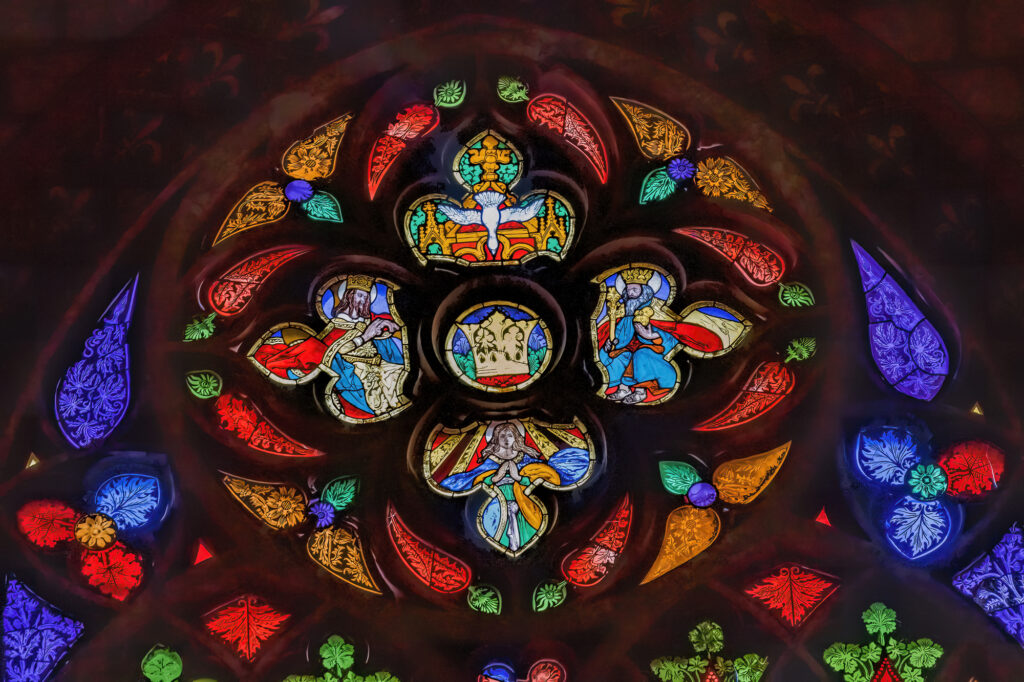Kraków: Stained Glass Museum - Private Tour
Located in the premises of the historical stained-glass studio S. G. Żeleński, the “living museum” offers a unique opportunity to get to know a functioning stained-glass workshop.
Here you can watch the masters at work and learn about the process of creating monumental glass works. Permanent Museum Exhibition: Gallery of Young Poland’s Stained Glass Masters is the only place in Poland where you can admire stained glass works of four outstanding artists of the early 20th century: Wyspiański, Mehoffer, Jastrzębowski and Stefan Matejko (Jan’s nephew) .
In addition, all floors of the studio house magnificent designs and examples of completed works from over a century of history.

Our history
The history of the Krakow Stained Glass Workshop dates back to 1902. Its originator was Stanisław Gabriel Żeleński – Tadeusz “Boy” Żeleński’s brother. Stanisław, an architect by profession and a great patriot, decided to create the first significant stained-glass workshop in Poland. He designed a building specially adapted to the needs of stained-glass work, which he preceded with a search around Europe, visiting numerous workshops and gathering inspiration.
The tenement house was completed in 1908 and remains our headquarters to this day. Unfortunately, Żeleński did not enjoy his enterprise for long – he died in 1914, shot during the battle of Grądy. After his death, the workshop was run by his wife, Izabela Żeleńska née Madejska. She became known as a skilful businesswoman and an excellent colourist, and the elite of Krakow’s artistic community met in her atelier on the top floor of the building. The artists who worked with the studio included Stanisław Wyspiański, Józef Mehoffer, Henryk Uziembło, Jan Bukowski, Karol Frycz, and Wojciech Jastrzębowski.
Żeleńska skilfully combined art with business: works made in the workshop were presented and awarded at many Polish and international exhibitions, including the Exhibition of Decorative Arts in Paris, from where the workshop brought a gold medal for stained glass windows to the Wawel Cathedral.
The outbreak of World War II did not destroy the activity of the workshop – it only stopped it for a few weeks. It was threatened with eviction several times, which fortunately did not happen. In 1952, the workshop was nationalized, after which it operated for several decades under the management of various work cooperatives.

After the transformation period, in 2000, the studio was bought out of the hands of the failing cooperative by a young artist, Piotr Ostrowski. Ostrowski renovated the interior of the building and restored the quality of the stained-glass works produced in the studio.
Soon afterwards, in 2004, he decided to combine the creation of stained glass with popularisation and educational activities – thus the Stained Glass Workshop and Museum was established.
Like a hundred years before, the Studio takes part in prestigious exhibitions and receives numerous awards and medals, including the “Sybilla 2017” for the “Apollo under Construction” project – the making of a work based on a design by Stanisław Wyspiański before the eyes of visitors, recognised as the best museum event of the year.
Source; https://muzeumwitrazu.pl/about-us/

- a unique opportunity to get to know a functioning stained-glass workshop
- Here you can watch the masters at work and learn about the process of creating
- Discover biggest artist Wyspiański, Mehoffer, Jastrzębowski and Stefan Matejko
- Hotel pick up with private transfer
- Entrance ticket
- Guided tour
- Drive back to hotel
